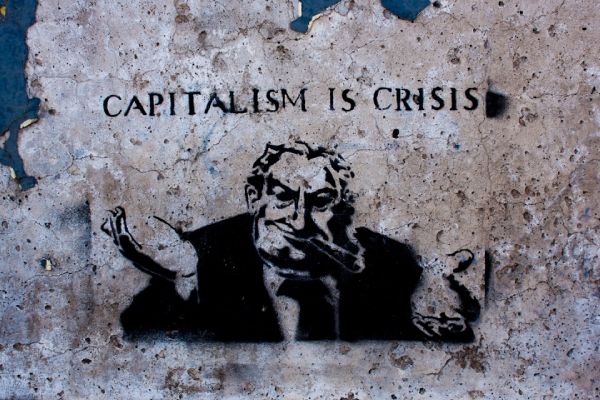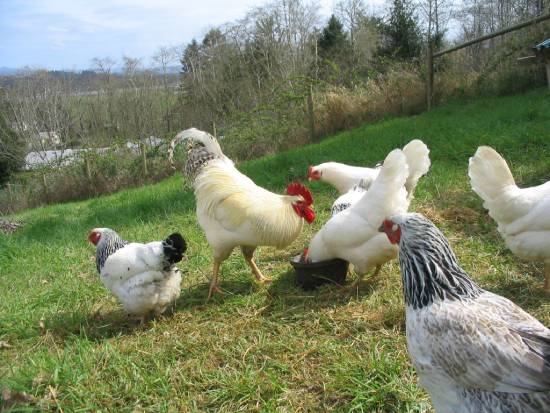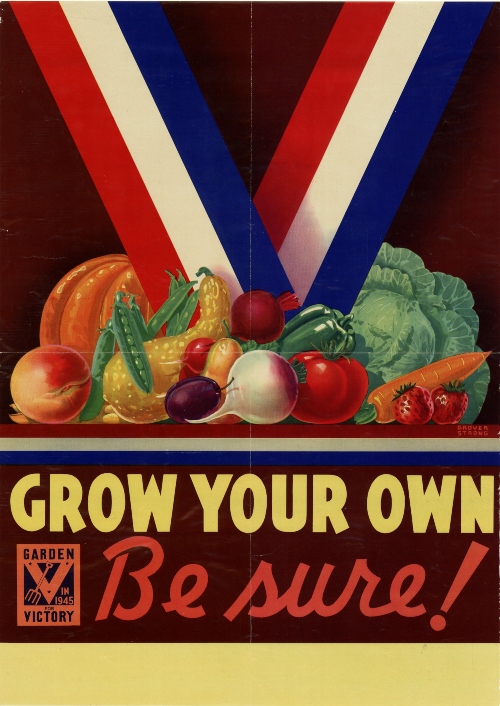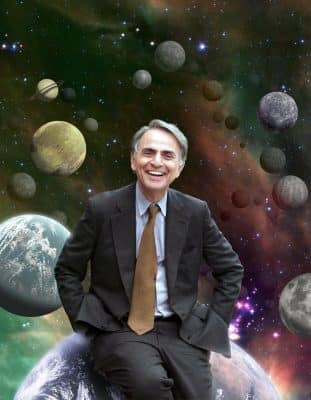Originally posted on April 20, 2016 by Cathal Haughian
250,000 capitalists read the Financial Times, and it has been our undertaking, since 2010, to chronicle our understanding of capitalism via our book The Philosophy of Capitalism.
We were curious as to the underlying nature of the system which endows us, the owners of capital, with so many favours. The Saker has asked me to explain our somewhat crude statement ‘Capitalism Requires World War’.
The present showdown between West, Russia and China is the culmination of a long running saga that began with World War One. Prior to which, Capitalism was governed by the gold standard system which was international, very solid, with clear rules and had brought great prosperity: for banking Capital was scarce and so allocated carefully. World War One required debt-capitalism of the FIAT kind, a bankrupt Britain began to pass the Imperial baton to the US, which had profited by financing the war and selling munitions.
The Weimar Republic, suffering a continuation of hostilities via economic means, tried to inflate away its debts in 1919-1923 with disastrous results—hyperinflation. Then, the reintroduction of the gold standard into a world poisoned by war, reparation and debt was fated to fail and ended with a deflationary bust in the early 1930’s and WW2.
The US government gained a lot of credibility after WW2 by outlawing offensive war and funding many construction projects that helped transfer private debt to the public book. The US government’s debt exploded during the war, but it also shifted the power game away from creditors to a big debtor that had a lot of political capital. The US used her power to define the new rules of the monetary system at Bretton Woods in 1944 and to keep physical hold of gold owned by other nations.
The US jacked up tax rates on the wealthy and had a period of elevated inflation in the late 40s and into the 1950s – all of which wiped out creditors, but also ushered in a unique middle class era in the West. The US also reformed extraction centric institutions in Europe and Japan to make sure an extractive-creditor class did not hobble growth, which was easy to do because the war had wiped them out (same as in Korea).
Capital destruction in WW2 reversed the Marxist rule that the rate of profit always falls. Take any given market – say jeans. At first, all the companies make these jeans using a great deal of human labour so all the jeans are priced around the average of total social labour time required for production (some companies will charge more, some companies less).
One company then introduces a machine (costed at $n) that makes jeans using a lot less labour time. Each of these robot assisted workers is paid the same hourly rate but the production process is now far more productive. This company, ignoring the capital outlay in the machinery, will now have a much higher profit rate than the others. This will attract capital, as capital is always on the lookout for higher rates of profit. The result will be a generalisation of this new mode of production. The robot or machine will be adopted by all the other companies, as it is a more efficient way of producing jeans.
As a consequence the price of the jeans will fall, as there is an increased margin within which each market actor can undercut his fellows. One company will lower prices so as to increase market share. This new price-point will become generalised as competing companies cut their prices to defend their market share. A further n$ was invested but per unit profit margin is put under constant downward pressure, so the rate of return in productive assets tends to fall over time in a competitive market place.
Interest rates have been falling for decades in the West because interest rates must always be below the rate of return on productive investments. If interest rates are higher than the risk adjusted rate of return then the capitalist might as well keep his money in a savings account. If there is real deflation his purchasing power increases for free and if there is inflation he will park his money (plus debt) in an unproductive asset that’s price inflating, E.G. Housing. Sound familiar? Sure, there has been plenty of profit generated since 2008 but it has not been recovered from productive investments in a competitive free market place. All that profit came from bubbles in asset classes and financial schemes abetted by money printing and zero interest rates.
Thus, we know that the underlying rate of return is near zero in the West. The rate of return falls naturally, due to capital accumulation and market competition. The system is called capitalism because capital accumulates: high income economies are those with the greatest accumulation of capital per worker. The robot assisted worker enjoys a higher income as he is highly productive, partly because the robotics made some of the workers redundant and there are fewer workers to share the profit. All the high income economies have had near zero interest rates for seven years. Interest rates in Europe are even negative. How has the system remained stable for so long?
All economic growth depends on energy gain. It takes energy (drilling the oil well) to gain energy. Unlike our everyday experience whereby energy acquisition and energy expenditure can be balanced, capitalism requires an absolute net energy gain. That gain, by way of energy exchange, takes the form of tools and machines that permit an increase in productivity per work hour. Thus GDP increases, living standards improve and the debts can be repaid. Thus, oil is a strategic capitalistic resource.
US net energy gain production peaked in 1974, to be replaced by production from Saudi Arabia, which made the USA a net importer of oil for the first time. US dependence on foreign oil rose from 26% to 47% between 1985 and 1989 to hit a peak of 60% in 2006. And, tellingly, real wages peaked in 1974, leveled-off and then began to fall for most US workers. Wages have never recovered. (The decline is more severe if you don’t believe government reported inflation figures that don’t count the cost of housing.)
What was the economic and political result of this decline? During the 20 years 1965-85, there were 4 recessions, 2 energy crises and wage and price controls. These were unprecedented in peacetime and The Gulf of Tonkin event led to the Vietnam War which finally required Nixon to move away from the Gold-Exchange Standard in 1971, opening the next degenerate chapter of FIAT finance up until 2008. Cutting this link to gold was cutting the external anchor impeding war and deficit spending. The promise of gold for dollars was revoked.
GDP in the US increased after 1974 but a portion of end use buying power was transferred to Saudi Arabia. They were supplying the net energy gain that was powering the US GDP increase. The working class in the US began to experience a slow real decline in living standards, as ‘their share’ of the economic pie was squeezed by the ever increasing transfer of buying power to Saudi Arabia.
The US banking and government elite responded by creating and cutting back legal and behavioral rules of a fiat based monetary system. The Chinese appreciated the long term opportunity that this presented and agreed to play ball. The USA over-produced credit money and China over-produced manufactured goods which cushioned the real decline in the buying power of America’s working class. Power relations between China and the US began to change: The Communist Party transferred value to the American consumer whilst Wall Street transferred most of the US industrial base to China. They didn’t ship the military industrial complex.
Large scale leverage meant that US consumers and businesses had the means to purchase increasingly with debt so the class war was deferred. This is how over production occurs: more is produced that is paid for not with money that represents actual realized labour time, but from future wealth, to be realised from future labour time. The Chinese labour force was producing more than it consumed.
The system has never differed from the limits laid down by the Laws of Thermodynamics. The Real economy system can never over-produce per se. The limit of production is absolute net energy gain. What is produced can be consumed. How did the Chinese produce such a super massive excess and for so long? Economic slavery can achieve radical improvements in living standards for those that benefit from ownership. Slaves don’t depreciate as they are rented and are not repaired for they replicate for free. Hundreds of millions of Chinese peasants limited their way of life and controlled their consumption in order to benefit their children. And their exploited life raised the rate of profit!
They began their long march to modern prosperity making toys, shoes, and textiles cheaper than poor women could in South Carolina or Honduras. Such factories are cheap to build and deferential, obedient and industrious peasant staff were a perfect match for work that was not dissimilar to tossing fruit into a bucket. Their legacy is the initial capital formation of modern China and one of the greatest accomplishments in human history. The Chinese didn’t use net energy gain from oil to power their super massive and sustained increase in production. They used economic slavery powered by caloric energy, exchanged from solar energy. The Chinese labour force picked the World’s low hanging fruit that didn’t need many tools or machines. Slaves don’t need tools for they are the tool.
Without a gold standard and capital ratios our form of over-production has grown enormously. The dotcom bubble was reflated through a housing bubble, which has been pumped up again by sovereign debt, printing press (QE) and central bank insolvency. The US working and middle classes have over-consumed relative to their share of the global economic pie for decades. The correction to prices (the destruction of credit money & accumulated capital) is still yet to happen. This is what has been happening since 1971 because of the growth of financialisation or monetisation.
The application of all these economic methods was justified by the political ideology of neo-Liberalism. Neo-Liberalism entails no or few capital controls, the destruction of trade unions, plundering state and public assets, importing peasants as domesticated help, and entrusting society’s value added production to The Communist Party of The People’s Republic of China.
The Chinese have many motives but their first motivation is power. Power is more important than money. If you’re rich and weak you get robbed. Russia provides illustrating stories of such: Gorbachev had received a promise from George HW Bush that the US would pay Russia approximately $400 billion over10 years as a “peace dividend” and as a tool to be utilized in the conversion of their state run to a market based economic system. The Russians believe the head of the CIA at the time, George Tenet, essentially killed the deal based on the idea that “letting the country fall apart will destroy Russia as a future military threat”. The country fell apart in 1992. Its natural assets were plundered which raised the rate of profit in the 90’s until President Putin put a stop to the robbery.
In the last analysis, the current framework of Capitalism results in labour redundancy, a falling rate of profit and ingrained trading imbalances caused by excess capacity. Under our current monopoly state capitalism a number of temporary preventive measures have evolved, including the expansion of university, military, and prison systems to warehouse new generations of labour.
Our problem is how to retain the “expected return rate” for us, the dominant class. Ultimately, there are only two large-scale solutions, which are intertwined. One is expansion of state debt to keep “the markets” moving and transfer wealth from future generations of labour to the present dominant class. The other is war, the consumer of last resort. Wars can burn up excess capacity, shift global markets, generate monopoly rents, and return future labour to a state of helplessness and reduced expectations. The Spanish flu killed 50-100 million people in 1918. As if this was not enough, it also took two World Wars across the 20th century and some 96 million dead to reduce unemployment and stabilize the “labour problem.”
Capitalism requires World War because Capitalism requires profit and cannot afford the unemployed. The point is capitalism could afford social democracy after the rate of profit was restored thanks to the depression of the 1930’s and the physical destruction of capital during WW2. Capitalism only produces for profit and social democracy was funded by taxing profits after WW2.
Post WW2 growth in labour productivity, due to automation, itself due to oil & gas replacing coal, meant workers could be better off. As the economic pie was growing, workers could receive the same %, and still receive a bigger slice. Wages as a % of US GDP actually increased in the period, 1945-1970. There was an increase in government spending which was being redirected in the form of redistributed incomes. Inequality will only worsen, because to make profits now we have to continually cut the cost of inputs, i.e. wages & benefits. Have we not already reached the point where large numbers of the working class can neither feed themselves nor afford a roof over their heads?13% of the UK working age population is out of work and receiving out of work benefits. A huge fraction is receiving in work benefits because low skill work now pays so little.
The underlying nature of Capitalism is cyclical. Here is how the political aspect of the cycle ends:
1920s/2000s – High inequality, high banker pay, low regulation, low taxes for the wealthy, robber barons (CEOs), reckless bankers, globalization phase
1929/2008 – Wall Street crash
1930s/2010s – Global recession, currency wars, trade wars, rising unemployment, nationalism and extremism
What comes next? – World War.
If Capitalism could speak, she would ask her older brother, Imperialism, this: “Can you solve the problem?” We are not reliving the 1930’s, the economy is now an integrated whole that encompasses the entire World. Capital has been accumulating since 1945, so under- and unemployment is a plague everywhere. How big is the problem? Official data tells us nothing, but the 47 million Americans on food aid are suggestive. That’s 1 in 7 Americans and total World population is 7 billion.
The scale of the solution is dangerous. Our probing for weakness in the South China Sea, Ukraine and Syria has awakened them to their danger. The Chinese and Russian leaders have reacted by integrating their payment systems and real economies, trading energy for manufactured goods for advanced weapon systems. As they are central players in the Shanghai Group we can assume their aim is the monetary system which is the bedrock of our Imperial power. What’s worse, they can avoid overt enemy action and simply choose to undermine “confidence” in the FIAT.
Though given the caliber of their nuclear arsenal, how can they be fought let alone defeated? Appetite preceded Reason, so Lust is hard to Reason with. But beware brother. Your Lust for Power began this saga, perhaps it’s time to Reason.





